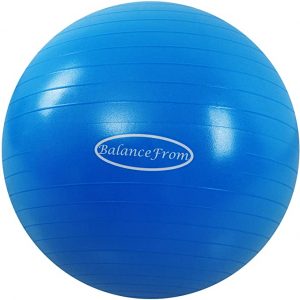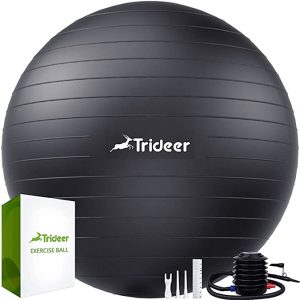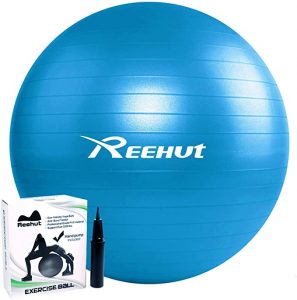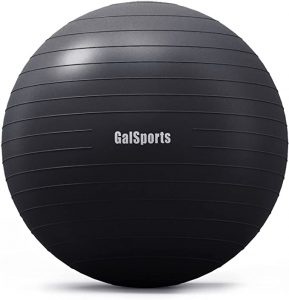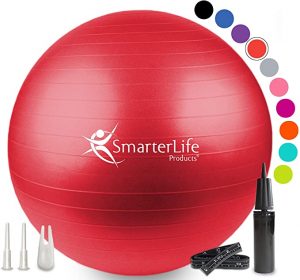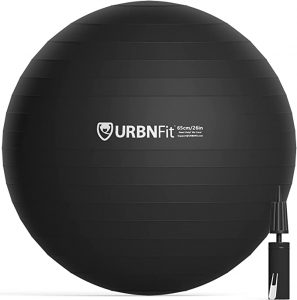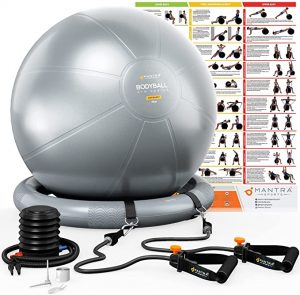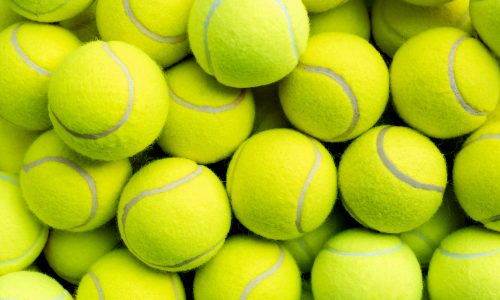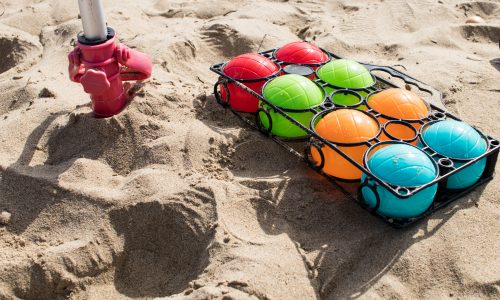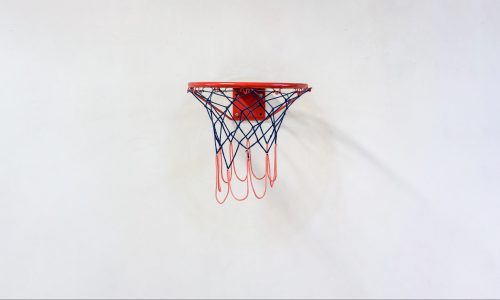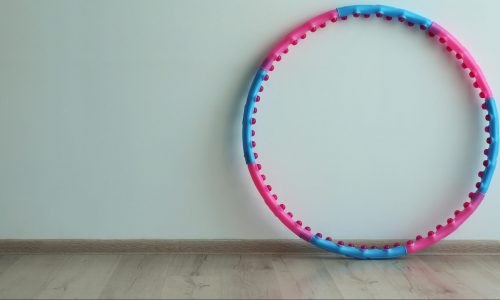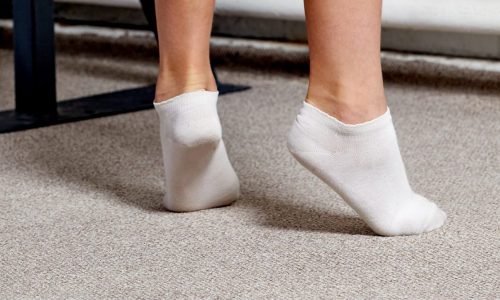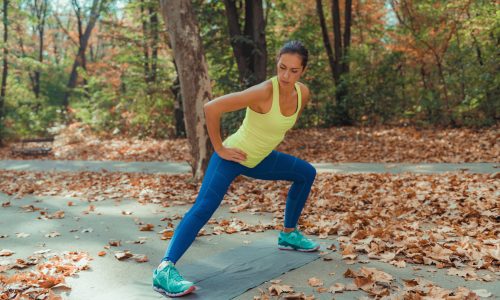The Best Balance Balls
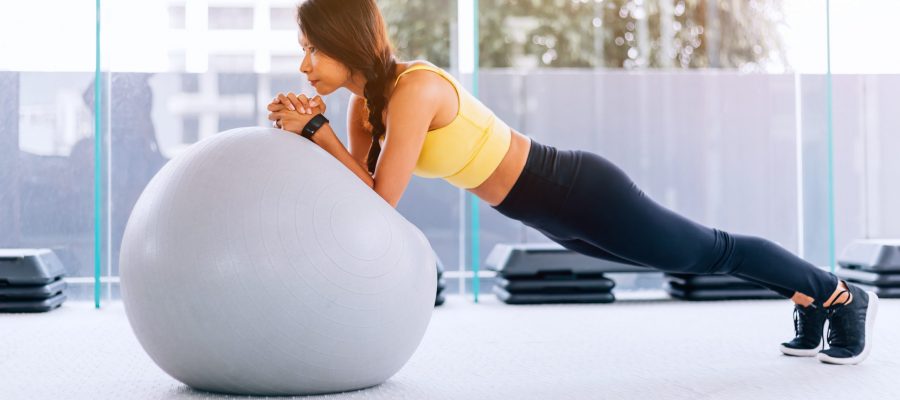
Our Review Process
Don't Waste Your Money is focused on helping you make the best purchasing decision. Our team of experts spends hundreds of hours analyzing, testing, and researching products so you don't have to. Learn more.
Our Picks For The Top Balance Balls
- 1. BalanceFrom Slip-Resistant Balance Ball, 2000LB-Capacity
- 2. Trideer Heavy-Duty Quick-Pump Balance Ball
- 3. REEHUT Anti-Burst Stability Balance Ball
- 4. SmarterLife Anti-Burst Balance Ball
- 5. GalSports Quick-Pump Stability Balance Ball
- 6. URBNFit Quick-Pump Yoga Balance Ball
- 7. MANTRA SPORTS Balance Ball Chair
Thanks to the included measuring tape, it's easy to see when this ball is fully inflated. Once it's there, you can expect very firm support. The material is rated to hold up to 2,000 pounds and the surface is textured to prevent slipping.
Sturdy and SafeOnce inflated, this balance ball can hold plenty of weight.
Active users will love the matte coating and overall firm feel of this balance ball. It's designed for active exercise, though you won't need to waste any extra sweat inflating it thanks to the included foot pump. It can take plenty of punishment without fear of deflation, even if there are extra weights involved.
Easy to InflateBring on the barbells; this durable ball has support to spare.
Whether you're using it as a therapeutic desk chair or as part of your exercise routine, this ball is up to the task. The textured PVC material makes it slip-resistant and also easy to clean. It can hold a generous amount of weight for long periods without losing air.
Multi-Purpose EquipmentThe PVC surface provides secure seating.
Taking your workout on the road? This ball can still be a part of it, thanks to a foot pump that can inflate the ball within minutes. Once it's up to full size, there are textured strips to keep you in place during strenuous exercise.
Good On the GoThis portable ball inflates and deflates quickly.
Buying Guide
The workout bench is probably the most versatile piece of exercise equipment in any home gym, but a close second has got to be the balance ball. These giant inflatable spheres are also known as exercise balls, stability balls or Swiss balls depending on what they’re used for — and they have a laundry list of uses.
Workers with back pain can passively strengthen their abdominal muscles by sitting on them. Pregnant women can use them to adjust to added birth weight. Then there are the countless core-building workout routines that involve these simple balls.
So, how do you find the right balance ball, especially when they all look the same? The first question to answer is how will you be using it: Actively or passively?
Active use means you’ll be incorporating your ball in a lot of exercise routines. That calls for balls that have a little extra durability. Look for those that are rated for a higher weight capacity, and have anti-burst properties such as an internal “honeycomb” structure. This will prevent them from popping immediately if they roll over something sharp. You’ll also want them to have some kind of textured surface. They are called stability balls, after all, and you want to stay stable on them even if you’re sweating.
Whether you’re buying your ball for active or passive use, you’re going to want the right size. For workouts, you might actually want several. While there is a standard size based loosely on your height (see below), different exercises may require bigger or smaller balls. The smaller the ball, the harder it is to balance on, so you may want to size down for crunches or similar moves once you gain a little more core strength.
If you’re simply using the ball as a posture-enhancing chair, you only need one — but that one ball needs to suit your size. Make sure that when you sit on the ball, your legs are at the angle they would be when sitting normally (about 90 degrees). That means the ball should be bigger the taller you are. Here’s a general comparison chart:
- For those who are 5 feet 2 inches tall or shorter, use a 55-centimeter diameter ball.
- At 5 feet 3 inches to 5 feet 10 inches, use a 65-centimeter ball.
- At 5 feet 11 inches to 6 feet 4 inches, use a 75-centimeter ball.
If you’re outside that range, you can find even smaller or bigger balance balls. And of course, weight is a factor, too. Size up or down if you’re especially heavy or light for your frame.
Finally, make sure that you can get that ball into shape to begin with. Most balance balls come with a pump of some sort, and a removable stopper when it’s time to deflate them. If you’re taking it to work, a quick-working automatic pump might be worth a few extra bucks.
What to Look For
- If your balance ball is going to be a piece of exercise equipment, it goes without saying that you should use with care. Don’t wiggle around on it or try to test your balance until you’re comfortable on it.
- The dangers of passive use are less obvious, but they do exist. When you use a balance ball as a chair, you have to engage abdominal muscles you wouldn’t otherwise be using while seated. That can help improve your posture and slightly work your core, but make sure you don’t fall back into a slouch as you get more comfortable with your bouncy new seat.
- If you have balance issues to begin with, take it slow — and/or consider a “frame” for the ball that gives you some back support and keeps it from rolling away. The incremental benefits aren’t worth one bad fall.
- Bear in mind: Textured plastic surfaces can prevent you from slipping, but they can also attract a lot more lint and hair. If you have pets who shed, this is one area where you may want to “balance” your needs.
More to Explore
Do your dogs or kids often hijack your balance ball? You can’t blame them too much. After all, Italian engineer Aquilino Cosani intended it to be used as a toy and gymnastics accessory when he invented it in 1963. Despite its origins in Italy, it came to be known as the Swiss ball in America after Swiss physical therapists adopted it for their practices.

